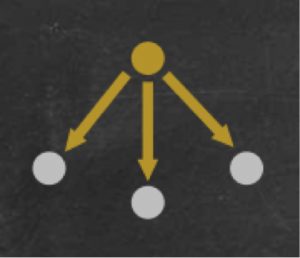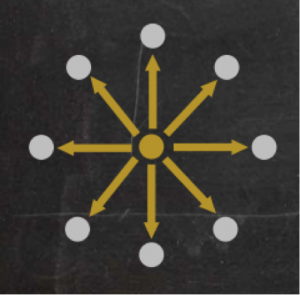We’re happy to announce this fully open education / open source project. This is early alpha, so expect some glitches and please give feedback regarding bugs, love and feature requests.
What is this Crowducate all about?
At Crowducate the crowd educates itself. Hence, open education. You know this concept from Wikipedia. Unlike Wikipedia, Crowducate is not an encyclopedia. The two main differences from Wikipedia are structured and interactive courses. By structured we mean that the content is divided into bite-sized chunks (i.e. lectures), which are grouped into sections. Interactive means that each lecture checks if the learner understood the material – currently via a quiz (more interactive options follow soon).
Besides, courses are related to users. Other users can copy courses, which empowers them to develop the copied courses into different new courses (e.g. specializing topics, language translation, etc.). Some of you know these mechanics from open-source software and notably GitHub, respectively.
What is the Benefit to other Open Education Alternatives?
Many of you have notices the raise of massive open online courses (MOOCs). The question is, are they truly open? Most MOOCs have put offline courses online. They’ve “just” taken the conventional teaching model and scaled it. Have a look at the next figures (yellow indicating teachers and white students, respectively).
However, a genuine open education means something else. It means that teaching, i.e. the content creation, also opens up.

Open Source on all Levels
In contrast to MOOCs, at Crowducate all courses are open source. This means people can copy courses to develop into different branches. Furthermore, the whole software itself is open source, too. You can find the source code at Github. You see, we are not only serious about open education but also open source.
How YOU can contribute
1st option: You might prefer to start learning something at Crowducate by just clicking on a specific course. Whenever you think, “there’s a grammatical mistake” or “answer x from the multiple-choice question of lecture y is too vague” or whatever it is, you can push the button ![]() to send a change request to the teacher. Cool huh? Through this feedback process the courses become better and better.
to send a change request to the teacher. Cool huh? Through this feedback process the courses become better and better.
2nd option: You copy an existing course by clicking ![]() , use it as your base and develop it the way you want.
, use it as your base and develop it the way you want.
3rd option: (1) Sign-up/Log-in, click (2) TEACH, (3) CREATE COURSE and now you can start creating a course from scratch.
Which features next?
Bear in mind this is the very beginning – a prototype of the product. It’s you who decides how we evolve it together. The roadmap post goes more into detail, so do the hackpad and the Github repo (for developers). Give us some feedback in the feedback forum or in the comment section. You can also write us an email.
You are the crowd. Open education is in your hands. Let’s democratize education together! And let’s enjoy learning and teaching.
Best,
Amir

